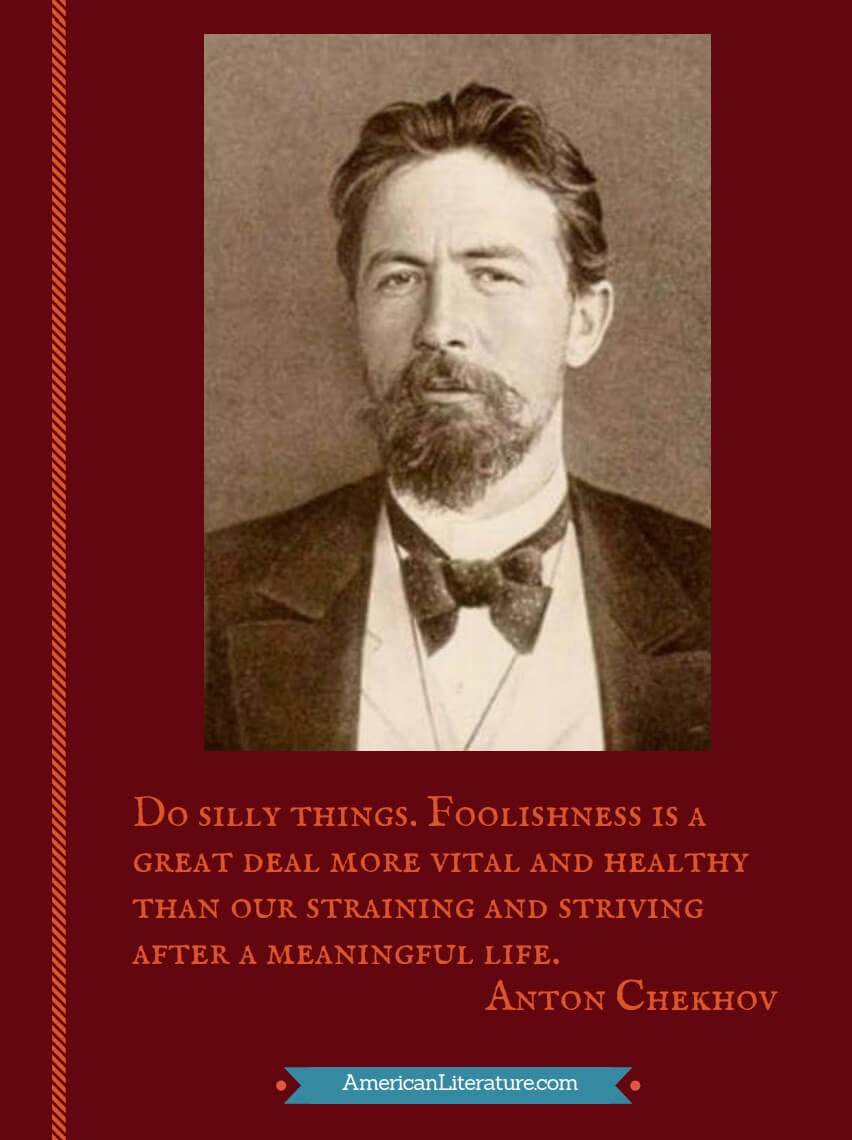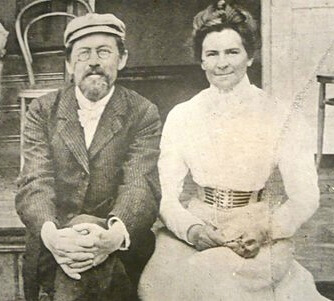
Anton Pavlovich Chekhov
Pen Name: Anton Chekhov
Born: January 29, 1860
Died: July 15, 1904
Anton Pavlovich Chekhov (Jan 29, 1860 - Jul 15, 1904) was a Russian physician and supreme short story writer and playwright. He was the third of six children. His father was a grocer, painter and religious fanatic with a mercurial temperament who "thrashed" his children and was likely emotionally abusive to his wife. Chekhov, like Dickens, was no stranger to financial hardship and in 1875 his father took the family and fled to Moscow to escape creditors. Chekhov stayed behind for three more years to finish school. He paid for his tuition by catching and selling goldfinches and dispensing private tutoring lessons, and selling short sketches to the newspaper. He sent any money he could spare money to his family in Moscow. Chekhov is considered an exemplar author in the genre of Realism. A child-family separation theme plays out in several of Chekhov's stories including Vanka, The Steppe, and Sleepy.
 In 1879 Chekhov was admitted to
medical school and he joined his family in Moscow. He assumed financial responsibility for the family and while
attending classes at Moscow State University, he wrote and sold a large number of humorous stories and vignettes of
contemporary Russian life. He published more than four hundred short stories, sketches and vignettes by the age of
twenty-six.
In 1879 Chekhov was admitted to
medical school and he joined his family in Moscow. He assumed financial responsibility for the family and while
attending classes at Moscow State University, he wrote and sold a large number of humorous stories and vignettes of
contemporary Russian life. He published more than four hundred short stories, sketches and vignettes by the age of
twenty-six.
"Medicine is my lawful wife and literature my mistress; when I get tired of one, I spend the night with the other."
Some consider Chekhov to be the founder of the modern short story and his influence is observed in a diverse group of writers including Flannery O'Connor, Tennessee Williams, William Somerset Maugham, Raymond Carver and John Cheever. Most of the English-speaking world knows him as a playwright, particularly for The Seagull, Uncle Vanya, Three Sisters and The Cherry Orchard.
 Some popular starting points for
short story readers include: Ward No. 6, The Darling and Gusev, The Hunstman and The Lady with the Little Dog. A Dreary Story is also an excellent work. Due to
it's length I have classified it here as a book. It's also well known under the alternative title A Boring Story which is the title listed in the
short story section as a convenience to readers searching under that name. Anton Chekhov himself was personally fond
of his short story, The Student.
Some popular starting points for
short story readers include: Ward No. 6, The Darling and Gusev, The Hunstman and The Lady with the Little Dog. A Dreary Story is also an excellent work. Due to
it's length I have classified it here as a book. It's also well known under the alternative title A Boring Story which is the title listed in the
short story section as a convenience to readers searching under that name. Anton Chekhov himself was personally fond
of his short story, The Student.
In 1897 Chekhov was diagnosed with tuberculosis. He purchased land in Yalta in 1898 after his father's death and had a villa built. He moved into the villa in 1899 with his mother and sister. This was a very prolific period for the great writer and he produced some of his most famous work during this period. Amongst those works is a trilogy featuring Ivan Ivanovitch, a veterinary surgeon and his schoolmaster friend, Burkin. The two are on a small trekking and shooting holiday. Chekhov overlays three stories that are amongst his most famous short stories in a trilogy sometimes referred to as "The Little Trilogy". The three short stories, in order, are: The Man in a Case, Gooseberries, and About Love. It was also during this period in Yalta that he produced Three Sisters and The Cherry Orchard.
 Witty to the end, Chekhov's last
words were, "I haven't had champagne for a long time." His words were a satirical reference to a specific etiquette
practiced in German medicine at the time; when it was determined that there was no hope for a patient's recovery, it
was customary for the doctor to offer the patient a glass of champagne.
Witty to the end, Chekhov's last
words were, "I haven't had champagne for a long time." His words were a satirical reference to a specific etiquette
practiced in German medicine at the time; when it was determined that there was no hope for a patient's recovery, it
was customary for the doctor to offer the patient a glass of champagne.
We feature two volumes of Anton Chekhov's great short stories in our Favorite Short Stories Collection. You may also enjoy reminiscences about Chekhov by Maxim Gorky and Aleksandr Kuprin.
Chekhov is featured in our collection of favorite Russian Writers
Enjoy American Literature's Anton Chekhov images at Pinterest.